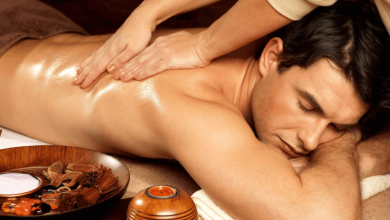Unlocking the Power of Massage Therapy

Massage therapy is an ancient practice that continues to play a significant role in modern wellness routines. With its ability to provide relaxation, relieve pain, and promote overall health, massage is a powerful tool that benefits both the body and the mind. This article explores the various types of massage, their unique benefits, and how you can incorporate massage into your wellness routine.
Types of Massage
There are numerous types of massage, each tailored to address different needs and preferences. Here are some of the most common ones:
- Swedish Massage: Known for its gentle, flowing strokes, Swedish massage is designed to relax the entire body. It’s ideal for beginners and those seeking overall relaxation.
- Deep Tissue Massage: This technique focuses on the deeper layers of muscle and connective tissue. It’s particularly effective for chronic pain and muscle injuries.
- Sports Massage: Specifically designed for athletes, this type of massage targets specific muscle groups used in athletic activities to prevent injuries and enhance performance.
- Thai Massage: Combines acupressure, yoga-like stretching, and rhythmic compressions to improve flexibility, circulation, and energy levels.
- Hot Stone Massage: Uses heated stones placed on specific areas of the body to relax muscles and relieve tension. The warmth enhances the therapeutic benefits of the massage.
- Aromatherapy Massage: Integrates massage with the use of essential oils to enhance physical and emotional well-being. Different oils are chosen based on the desired effect, such as relaxation or energy boost.
- Reflexology: Focuses on applying pressure to specific points on the feet, hands, and ears that correspond to various organs and systems in the body, promoting overall health and balance.
Benefits of Massage Therapy
Massage offers a wide range of benefits that contribute to overall health and well-being. Some of the key benefits include:
- Stress Reduction: By lowering cortisol levels and increasing the production of serotonin and dopamine, massage helps reduce stress and promote relaxation.
- Pain Relief: Effective in relieving chronic pain, muscle tension, and conditions like arthritis and fibromyalgia. Massage can also aid in the recovery from injuries.
- Improved Circulation: Enhances blood flow, promoting the delivery of oxygen and nutrients to tissues, which aids in faster healing and improved health.
- Increased Flexibility and Range of Motion: Regular massage helps to relax and stretch muscles, improving flexibility and preventing injuries.
- Enhanced Immune Function: Some studies suggest that massage can boost the immune system by increasing the activity of natural killer cells.
- Better Sleep: The relaxing effects of massage can improve sleep quality, helping you wake up feeling refreshed and rejuvenated.
Preparing for a Massage Session
To get the most out of your massage session, it’s important to be well-prepared. Here are some tips:
- Hydration: Drink plenty of water before and after your massage to help flush out toxins released during the session.
- Comfortable Clothing: Wear loose, comfortable clothing to your appointment. You will typically undress to your comfort level, and you’ll be covered with a sheet or towel during the session.
- Communication: Inform your therapist about any specific areas of concern, medical conditions, or preferences for pressure and technique. Open communication ensures a more effective and enjoyable experience.
- Relaxation: Arrive a few minutes early to relax and prepare mentally for your session. Take a moment post-massage to enjoy the relaxation before resuming your day.
Choosing the Right Massage Therapist
Finding a skilled and experienced massage therapist is crucial for a beneficial experience. Consider the following when choosing a therapist:
- Credentials: Ensure the therapist is certified and licensed in your area.
- Experience: Look for a therapist who specializes in the type of massage you need.
- Reputation: Read reviews and ask for recommendations from friends or family.
- Comfort: Choose a therapist with whom you feel comfortable and can communicate openly.
Incorporating Massage into Your Wellness Routine
Regular massage sessions can be a valuable addition to your overall wellness routine. Here are some tips for incorporating massage into your life:
- Schedule Regular Sessions: Consistency is key to reaping the full benefits of massage. Aim for regular sessions, whether weekly, bi-weekly, or monthly.
- Listen to Your Body: Pay attention to how your body feels after a massage and adjust the frequency and type of massage accordingly.
- Combine with Other Wellness Practices: Integrate massage with other wellness activities like yoga, meditation, and a healthy diet to enhance overall health and well-being.
- Set Goals: Whether you’re looking to relieve stress, manage pain, or improve flexibility, set specific goals for your massage therapy to help track progress and adjust as needed.
Conclusion
Massage therapy is a powerful tool for promoting physical and emotional well-being. With its numerous techniques and extensive benefits, massage can be a vital component of a holistic health routine. By understanding the different types of massage and their specific advantages, you can make informed decisions and incorporate regular massage sessions into your life to enjoy improved health and wellness. Whether you seek relief from pain, stress reduction, or simply a moment of relaxation, massage therapy offers a holistic approach to achieving overall balance and vitality.

